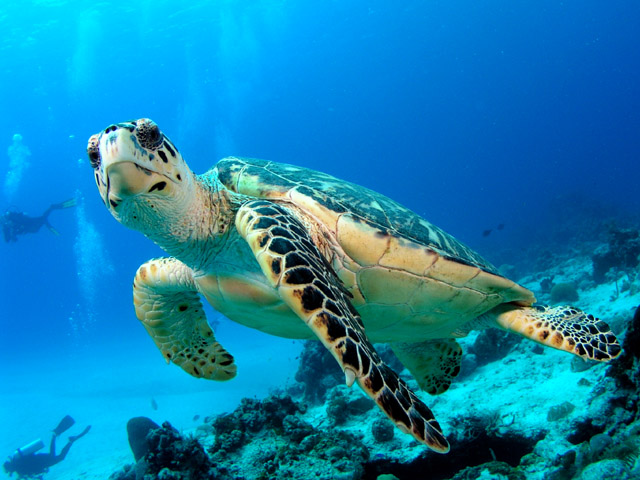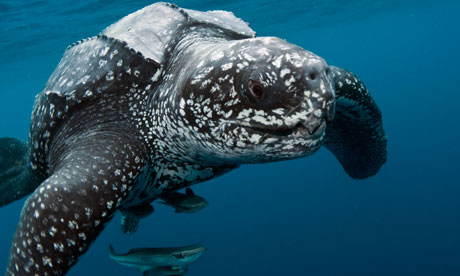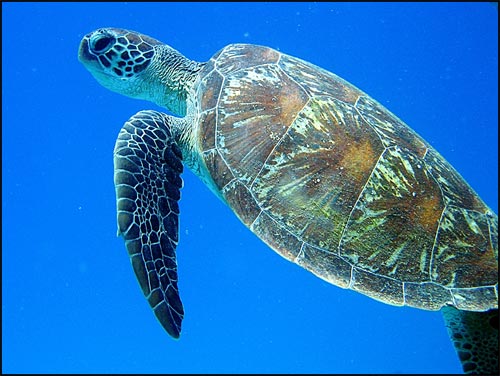A seven year old child is playing with her toys during her play time. Deep in her imagination, she picks up her favorite barbie doll named Lucy, combs its hair and begin mimicking the dolls voice as if it was alive talking. While doing so, she quickly notices her other favorite toy, not knowing what exactly it is, which was given to her as a gift for her birthday. It was a green round shaped soft toy with flat 'legs', a turtle. She then placed the barbie doll on the turtle, as if it was the doll's carriage, moving her way around the kingdom. The child paused for a moment thinking, then skips to her mummy...
Child: Mummy, what is this actually?
Mother: Its a turtle honey. Why?
Child: Just wondering. Mummy where do turtles live?
Mother: They live in the sea, but turtles swim to the beach to lay eggs.
Child: (excited) Oh mummy! can we go and see turtles one day? At the beach?
Mother: I wish I could show you a real life turtle darling, Unfortunately they don't exist anymore.
Child: (sad tone) I don't understand.. What do you mean mum?
Mother: They've already extinct, meaning the last turtle died many years ago.....
How sad will it be for our future generations if Turtles don't exist anymore. They would probably have this pictures to look at, or the same skeleton of a Turtle in the museum only; just like dinosaurs.
But if everyone plays their part in conserving the Turtles, our future generations can still get to see them. Well of course it's not just one person's effort, but collectively everyone's effort to conserve turtles. Help mother nature a bit.
In Malaysia, conservation efforts for the 4 types of turtles, as elaborated by Chang Minjun in the earlier blog post(see How Many Type of Turtles in Malaysia), have started all the way back in the 1980s. Many organizations related to turtle conservation are going all out in their effort to educate and encourage the public on turtle conservation.
The question is, how do we conserve turtles? Many campaigns and programs have been organized for Malaysians to do their part. Some includes educational campaigns for the younger generation to be aware of this issue as well. And of course our Connect To Conserve campaign organized by Advanced Diploma in Mass Communication(Public Relations) Year 1 students of TAR University College is one fine example of an educative campaign in support of WWF-Malaysia, together with Nokia Sustainability Division (SEAP) as our partner.
Well, you can do your part in helping the conservation of turtles too! How? It all comes down to the basics. THE VERY FIRST, stop purchasing and consuming turtle eggs. Economics concept, if there is no demand, there will not be any supply necessary. In Malaysia, places like Terengganu is famous for consuming turtle eggs. This also applies to things that are made out of turtle parts, such as jewelry, guitar pick, cigarette cases and other decorative ornaments.
Turtle eggs being sold in the market.
Tourist eating turtle eggs.
Next, by pledging to save turtles. "What you said? pledge?" Yes, pledge. Many people do not know the power they posses when they pledge to save something. Through the collection of pledge done by WWF-Malaysia, we can amend the law to ban leatherback turtle egg consumption in Malaysia; as it is one of the biggest cause of turtle extinction, it is no use when a mother turtle lays about 100 eggs every time and humans keep eating them and that causes the population of turtle eggs to decline even further. Hence all the more we should strive harder to save turtles by starting with saving their eggs first.
We, the Sea Army, is ready to help WWF-Malaysia with the collection of pledges. So be sure to be there at our event(details are as below) and visit our Connect To Conserve FB Page to know more about our campaign.
Date: 10th - 12th July 2013
Time: 10am - 5pm
Venue: TAR University College, College Hall.
And of course, don't forget to bring along your old mobile phones for these turtles! :)
See you there!
Posted by,
Lee Marilyn
Project Manager
Connect to Conserve
Advanced Diploma in Mass Communication(Public Relations) Year 1
School of Social Science and Humanities
Tunku Abdul Rahman University College

























